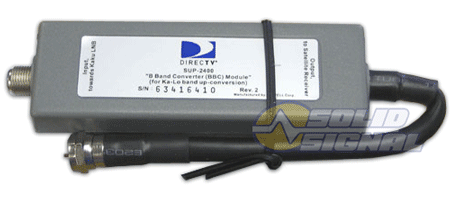Rara avis. That’s what people used to call something they didn’t see that often. What you see above may look like your garden-variety HR22, but it’s actually the DIRECTV HR23. Its partner, the H23 receiver, were released with great fanfare in late 2008, heralded as “the next big thing.”
What’s so special about these boxes?

From the outside, there was practically no telling the HR23 and H23 from their more common HR21/HR22 and H21 counterparts. The HR23’s record light was bright red, while the H23 had nothing but a sticker to differentiate it.
There was, however, something cooking inside. DIRECTV added close to 100 new HD national channels in 2007 and 2008, and for older receivers and DVRs, a B-Band converter was required to view them. The HR23 and H23 had new tuner chips that didn’t need a B-band converter at all. This meant a cleaner installation for most customers, without two very large dongles hanging out of the back.
Unfortunately, these new chips made the HR23 and H23 much more expensive to build than the other receivers and DVRs. Not only that, DIRECTV had a storehouse full of B-Band converters. Customers liked the new DVRs but weren’t willing to pay extra for them.
The revolution that was brewing
There was an even more important revolution brewing in the mid-2000s for DIRECTV, though. This revolution doomed the HR23 and H23 to the margins of satellite history. Its name: The Single Wire Multiswitch. DIRECTV’s new SWM (as it was instantly renamed) let every receiver use only one wire instead of two, and made cabling easier. It also meant that regardless of your receiver, you could toss those old B-band converters; they weren’t necessary.
By 2010 DIRECTV was installing SWMs as the default for new customers, and upgrading customers who wanted whole-home viewing. The age of the B-Band converter was gone, and so was the need for the more expensive HR23 and H23. Still, hundreds of thousands were installed.
Over time, the HR23 and H23 didn’t age well. Most seemed to slow down more than their HR21 and HR22 counterparts. It’s possible that some of the software fixes being applied to other receivers weren’t being applied as quickly to this pair of boxes. The receivers were replaced by the HR24 and H24, super-reliable receivers that are still in use today a decade after they were originally released.
Do you still have one of these rare birds?
If you have an HR23 or H23 (or even if you think you do) you need to know that you may have an issue upgrading them. Press-and-hold INFO on your white DIRECTV remote and you’ll see a screen with the model name. Press EXIT then DASH and you’ll see a popup that will say “SWiM Connected” or not. If you have an HR23 or H23, and you’re not “SWiM Connected”, you will need B-band converters if you upgrade to an HR24 or H24 receiver. (You won’t be able to upgrade to an HR34 Genie or H25 without upgrading to SWM technology.)
If you need B-Band converters, you’re in luck — Solid Signal still has them in stock. We may be the only company still selling ones that are new in box. In addition to working for these older products, they also have found a life in the ham radio community. Ham operators use them to help old radios use frequencies in the 250-450MHz range.
For those who still need B-Band converters, you’ll need two for a DVR, one for a receiver. They connect between the cable coming from the wall and the receiver. But really, if your device is capable of being upgraded to SWM, as every DIRECTV receiver made since 2006 is, it’s probably better to move away from older technology and toward something more futureproof.





